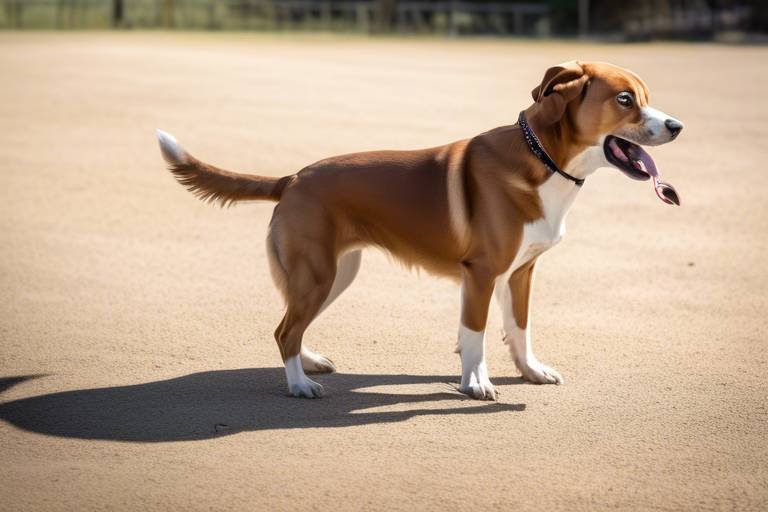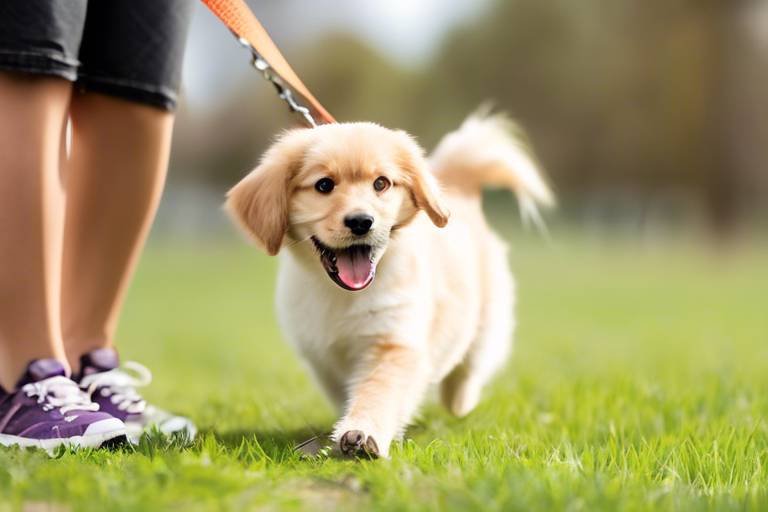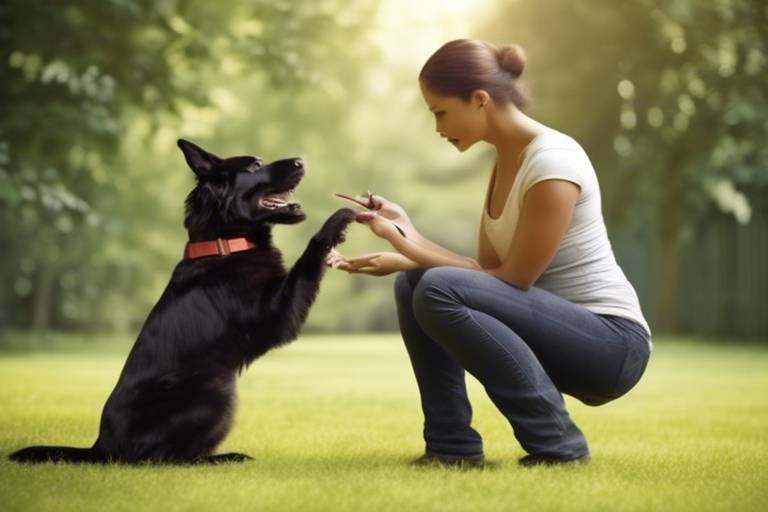How to Help Your Pet Develop Social Skills
As pet owners, we want our furry friends to be happy, healthy, and well-adjusted. One of the most vital aspects of a pet's well-being is their ability to socialize effectively. Just like humans, pets benefit immensely from social interactions, which can lead to a more fulfilling life. But how do we ensure our pets develop these essential social skills? In this article, we will explore various strategies that can help your pet interact positively with other animals and humans, ultimately leading to a happier and healthier life.
Socialization is crucial for pets, helping them develop confidence and reducing anxiety. Think of socialization as a toolkit; the more tools your pet has, the better equipped they are to handle different situations. Early socialization is particularly important—it lays the foundation for how your pet will behave throughout their life. A well-socialized pet is usually more adaptable, less fearful, and generally more enjoyable to be around. On the flip side, a lack of socialization can lead to behavioral issues, such as aggression or excessive fear. So, how do we go about ensuring our pets are socialized properly?
Every pet is unique, and understanding their individual socialization needs is crucial. Just like people, pets have different temperaments. Some may thrive in busy environments, while others may prefer quieter settings. To assess your pet's specific needs, observe their behavior in various situations. Are they eager to meet new friends, or do they shy away? Identifying these traits can help you tailor a socialization plan that meets their needs. For instance, if your dog shows signs of fear when meeting new dogs, gradual introductions in a controlled environment can help build their confidence.
Recognizing the signs of good social skills in pets is essential. A well-adjusted pet will exhibit behaviors such as:
- Approaching other animals and humans with curiosity rather than fear.
- Engaging in play without signs of aggression.
- Responding positively to commands in social settings.
If your pet displays these behaviors, they're likely on the right track. However, if you notice signs of anxiety or aggression, it may be time to reassess their socialization experiences.
Observing how your pet interacts with other animals can provide insights into their social skills. Positive interactions include playful behavior, relaxed body language, and mutual engagement. To encourage these interactions, consider arranging playdates with friendly pets or enrolling in group classes. Remember, the goal is to create a fun and safe environment where your pet can explore their social side.
Human interaction is vital for pet socialization. A pet that is comfortable around people will be more adaptable in various situations. Look for behaviors such as wagging tails, relaxed body posture, and a willingness to approach and interact. To foster these interactions, you can invite friends over to meet your pet or take them on outings to pet-friendly places. The more positive experiences they have with humans, the more confident they will become.
Many pets face socialization challenges, which can stem from various factors such as past trauma or lack of exposure. Common issues include fear of loud noises, aggression towards other animals, or anxiety in new environments. Addressing these challenges requires patience and understanding. For example, if your pet shows fear, consider desensitization techniques, gradually exposing them to the source of their anxiety in a controlled manner.
Utilizing specific techniques can greatly enhance your pet's social skills. Here are a few effective methods:
- Controlled Introductions: Introduce your pet to new animals or people in a calm and controlled environment.
- Positive Reinforcement: Reward your pet with treats and praise when they exhibit good social behavior.
These strategies can facilitate better interactions and help your pet feel more comfortable in social settings.
Participating in group classes or arranging playdates can provide valuable social experiences. These activities not only help your pet learn to interact with others but also allow you to meet fellow pet owners. The benefits of these activities for your pet's social development are immense, as they create opportunities for learning and growth.
Introducing your pet to new environments gradually can help them adapt. Start with short trips to less crowded places and gradually increase the exposure as they become more comfortable. This method minimizes stress and allows your pet to explore at their own pace. Remember, every little step counts!
Tracking your pet's socialization progress is crucial. Keep an eye on their behavior changes and be ready to adjust your strategies as needed. If they seem overwhelmed or stressed, it might be time to take a step back and reassess. Documenting these changes can help you identify patterns and make informed decisions about their socialization journey.
Q: How early should I start socializing my pet?
A: It's best to start socializing your pet as early as possible, ideally during their critical socialization period, which is usually between 3 to 14 weeks of age.
Q: What if my pet is fearful of other animals?
A: Gradual exposure and positive reinforcement can help. Start with controlled introductions and always prioritize your pet's comfort.
Q: How do I know if my pet is well-socialized?
A: Look for signs of confidence, such as a relaxed demeanor, willingness to engage with others, and positive play behavior.
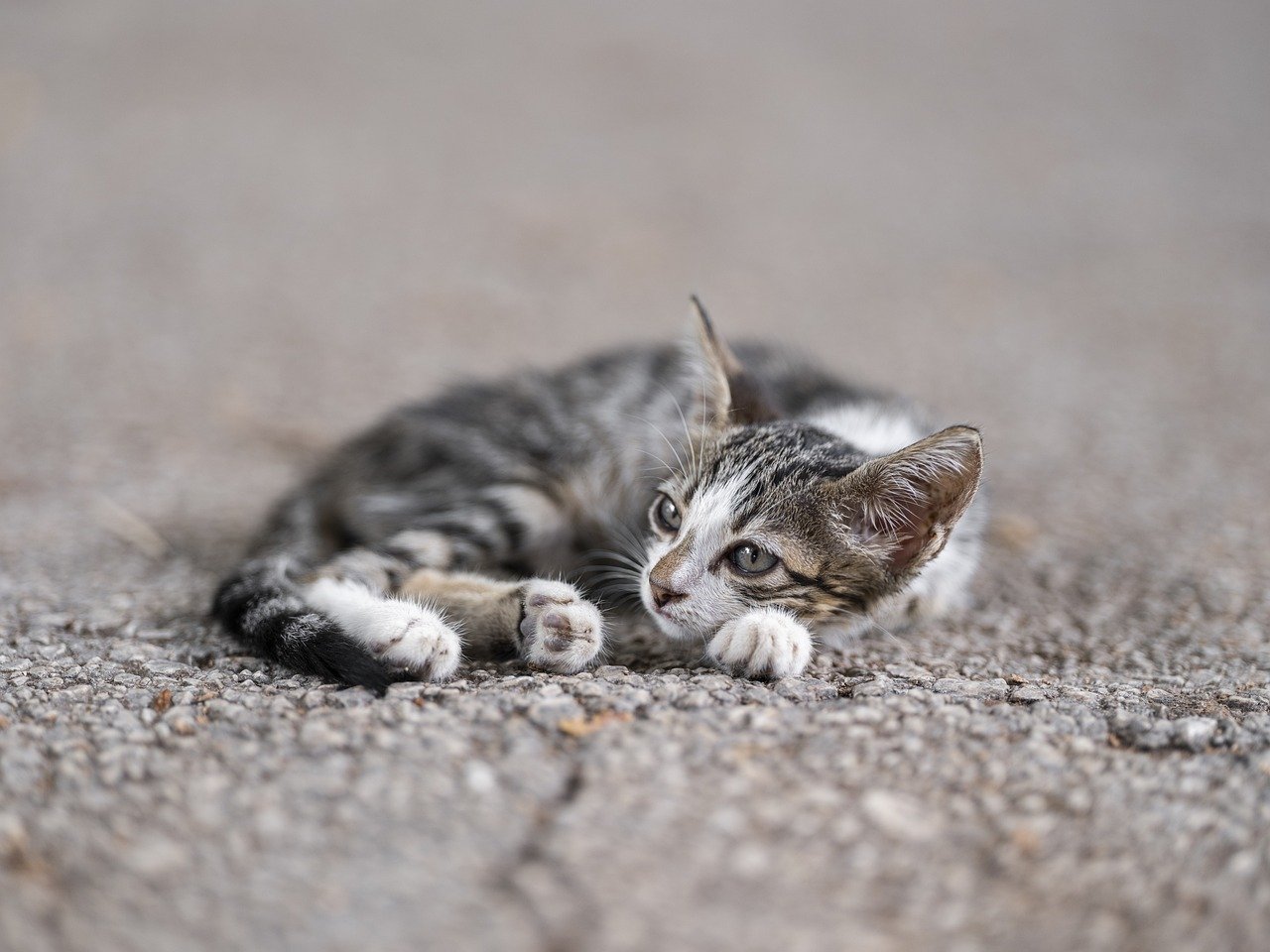
Understanding Pet Socialization
Socialization is a vital part of your pet's development, acting as the backbone for their confidence and overall behavior. Just like humans, pets thrive on interaction and learn how to navigate their world through experiences. Imagine a puppy or kitten stepping out into the world for the first time; it’s a bit like a child starting school. The experiences they gather in those formative months can shape their behavior for a lifetime. Early socialization not only helps pets become well-adjusted companions but also significantly reduces anxiety and fear in unfamiliar situations.
When we talk about socialization, we’re really discussing the process of exposing your pet to a variety of people, environments, and other animals. This exposure is crucial as it helps them learn how to react appropriately in different scenarios. For example, a well-socialized dog will be more comfortable meeting new people or encountering other dogs at the park. On the flip side, a pet that hasn’t been socialized may exhibit fear or aggression, leading to stress for both the pet and their owner.
So, why is early socialization so important? Let's break it down:
- Confidence Building: Pets that are exposed to various situations early on tend to be more confident. They learn that new experiences can be enjoyable rather than frightening.
- Behavioral Development: Proper socialization helps prevent behavioral issues such as excessive barking, biting, or fear-based reactions. It teaches them how to communicate effectively with both humans and other animals.
- Healthier Relationships: Social pets tend to have better relationships with their owners and other pets. They are less likely to develop anxiety-related issues, making them happier companions.
Socialization doesn’t stop after the puppy or kitten phase; it’s an ongoing process that continues throughout your pet's life. Just think of it as a lifelong lesson in manners and etiquette! Regularly introducing your pet to new experiences and environments will keep their social skills sharp and their confidence high. Whether it’s a trip to the vet, a walk in a busy park, or a playdate with other pets, these interactions contribute to a well-rounded, social animal.
In summary, understanding pet socialization is about recognizing its critical role in your pet's life. By actively engaging in their social development, you’re not just enhancing their ability to interact with others; you are also enriching their quality of life. Remember, a well-socialized pet is a happy pet!
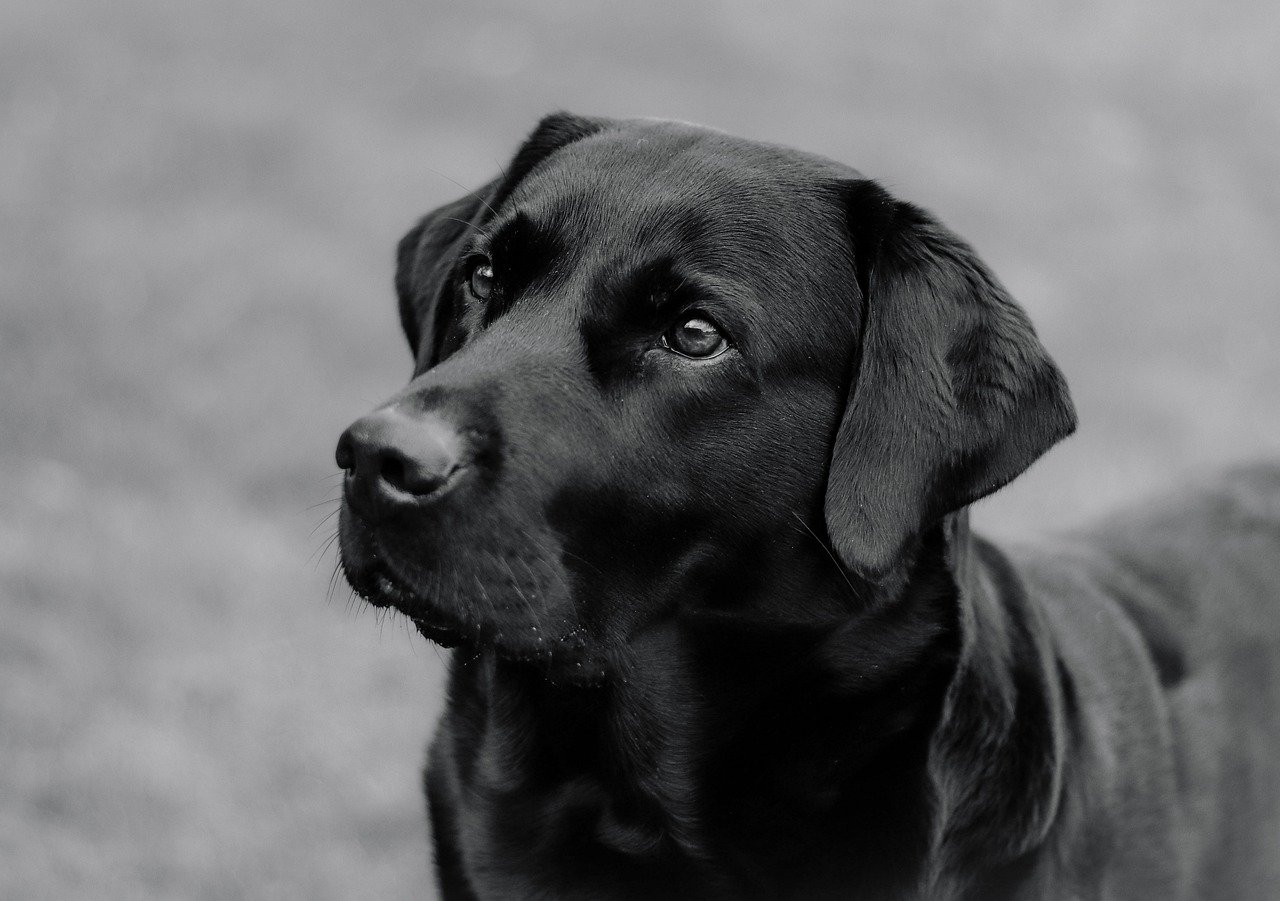
Identifying Socialization Needs
Every pet is unique, much like snowflakes; no two are exactly alike. Understanding your pet's specific socialization needs is crucial for their overall well-being and happiness. Just as humans thrive in different social environments, pets also have their own distinct preferences and requirements when it comes to interacting with others. So, how do you identify these needs? The first step is to observe your pet's behavior in various situations. Are they shy and hesitant around new animals or people, or do they seem overly excited and boisterous? These behaviors can be indicators of their comfort level and social skills.
To get a clearer picture, consider the following factors:
- Temperament: Is your pet naturally outgoing or more reserved? Understanding their inherent personality can guide you in tailoring socialization experiences that suit them best.
- Age: Puppies and kittens are generally more adaptable and open to new experiences, while older pets may have established habits that are harder to change.
- Previous Experiences: Has your pet had negative encounters with other animals or people? Past trauma can significantly impact their willingness to engage socially.
Once you've assessed these factors, it’s essential to create a socialization plan that addresses your pet's specific needs. For instance, if your dog is timid around larger breeds, you might start with smaller, friendlier dogs to help build their confidence. Alternatively, if your cat is fearful of strangers, gradual exposure to new people in a controlled environment can ease their anxiety.
Moreover, don’t forget to take note of your pet's body language during social interactions. Signs of comfort, such as relaxed posture, wagging tails (for dogs), or slow blinking (for cats), indicate that your pet is enjoying the experience. Conversely, signs of stress like growling, hissing, or tail tucking should prompt you to reassess the situation and adjust your approach. Remember, the goal is to create positive associations with social interactions, which will ultimately lead to a happier and more confident pet.
In summary, identifying your pet's socialization needs is an ongoing process that requires patience, observation, and adaptability. By understanding their temperament, age, and past experiences, you can tailor socialization activities that foster growth and confidence. After all, every pet deserves the chance to thrive in a social world!
- What if my pet is aggressive towards other animals? It's essential to consult a professional trainer or behaviorist who can help you develop a customized plan to address aggression safely.
- How often should I socialize my pet? Regular socialization is key. Aim for a few times a week, but ensure each interaction is positive and not overwhelming.
- Can older pets still learn to socialize? Absolutely! While it may take more time and patience, older pets can definitely learn to be more social.
Signs of Healthy Social Skills
Recognizing the signs of healthy social skills in your pet is crucial for ensuring they lead a happy and fulfilling life. Just like humans, pets exhibit various behaviors that indicate their comfort level in social situations. When your furry friend interacts positively with other animals and humans, it’s a clear sign that they have developed strong social skills. For instance, a confident pet will approach new situations with curiosity rather than fear. You might notice them wagging their tail or having a relaxed posture, which are indicators of a friendly demeanor.
Additionally, observing your pet's body language can provide valuable insights into their social capabilities. Here are some key behaviors to look for:
- Playfulness: A pet that engages in playful behavior, such as chasing or inviting other animals to play, is typically well-adjusted. Playtime is a natural way for pets to express their social skills.
- Curiosity: If your pet shows interest in new people or animals without displaying signs of fear or aggression, it indicates a healthy level of confidence.
- Relaxed Body Language: Look for signs like a wagging tail, relaxed ears, and a calm demeanor. These are indicators that your pet feels safe and secure in their environment.
- Positive Responses: If your pet responds well to commands and engages with humans and other pets, it showcases their ability to communicate effectively.
Moreover, a well-socialized pet will often exhibit a balanced mix of independence and attachment. They should be comfortable exploring their surroundings but also enjoy returning to you for reassurance. This balance is vital as it indicates that they trust their environment and their human companions.
It’s also essential to note that social skills can vary greatly among different breeds and individual pets. Some pets might naturally be more sociable than others, which is perfectly normal. For instance, while a Labrador Retriever may thrive in social settings, a Shiba Inu might prefer a more solitary approach. Understanding these nuances can help you gauge your pet’s social skills more accurately.
In conclusion, recognizing the signs of healthy social skills in your pet can significantly enhance your approach to their socialization. By fostering environments where they can thrive, you not only contribute to their happiness but also ensure a harmonious relationship between your pet and the world around them.
Positive Interactions with Other Pets
When it comes to your furry friend, fostering positive interactions with other pets is not just a nice-to-have; it's a crucial part of their development. Imagine your pet as a social butterfly, fluttering around with confidence and ease among their peers. This is what we aim for! Positive interactions can significantly reduce anxiety and help your pet feel more at home in various environments. But how do we create these delightful moments?
First off, it's essential to understand that not all pets are the same. Some may thrive in bustling environments, while others might prefer a quieter setting. To ensure that your pet is comfortable, start with controlled introductions. This means allowing your pet to meet other animals in a safe, familiar space where they feel secure. Think of it as a first date; you wouldn't want to take someone to a loud, crowded restaurant for a romantic dinner, right? Similarly, choose a calm atmosphere for your pet's initial interactions.
During these introductions, observe your pet's body language closely. Signs of a positive interaction include wagging tails, relaxed ears, and playful behavior. If your pet seems tense or fearful, it’s crucial to take a step back. Remember, patience is key! Gradually increasing the duration of these interactions can help your pet build confidence. You might even consider using treats or toys to create a fun and engaging experience. After all, who doesn't love a good snack during socializing?
Another effective strategy is to encourage playful behaviors. Engaging in games like fetch or tug-of-war with other pets can create a bond and foster positive feelings. This is where the magic happens—when pets play together, they learn to communicate and understand each other’s cues. It’s like a dance; once they learn the steps, they can twirl around with joy!
However, it's essential to monitor these interactions closely. If you notice any signs of aggression or discomfort, be ready to intervene. You want to ensure that every interaction leaves your pet feeling happy and fulfilled. Think of it as a delicate balance; too much too soon can lead to negative experiences. But when done right, these interactions can be the highlight of your pet's day!
To summarize, positive interactions with other pets can lead to a happier, well-adjusted companion. By starting with controlled introductions, observing body language, encouraging playful behaviors, and monitoring interactions, you can help your pet develop the social skills they need to thrive. Remember, every little step counts, and with your guidance, your pet can become a social superstar!
- How can I tell if my pet is comfortable around other animals?
Look for relaxed body language, wagging tails, and playful behavior as signs of comfort. - What should I do if my pet shows signs of aggression during social interactions?
It's important to intervene immediately, remove your pet from the situation, and consult a professional trainer if necessary. - How often should I arrange playdates for my pet?
Regular playdates can be beneficial, but it's essential to ensure that your pet is comfortable and enjoys these interactions. - Can I socialize my pet at any age?
While early socialization is ideal, older pets can still learn and adapt. Patience and gradual exposure are key.
Engagement with Humans
When it comes to your pet's social skills, plays a pivotal role. Just like us, pets thrive on interaction and connection, and fostering these relationships can significantly enhance their overall well-being. Have you ever noticed how your dog wags its tail with excitement when a friend visits? Or how your cat purrs contentedly while snuggled up next to you? These moments are not just adorable; they are vital for your pet's social development.
To encourage positive engagement with humans, it’s essential to create a comfortable environment for your pet. Start by introducing your pet to different people in a controlled manner. For example, invite friends over, but make sure they understand how to approach your pet gently. This can help your furry friend feel secure and less anxious. Positive experiences with humans can lay the foundation for a well-adjusted pet. Remember, patience is key; not every pet will warm up to strangers immediately.
Moreover, engaging your pet in interactive activities can also help strengthen the bond between you and them. Here are some fun ideas:
- Playtime: Use toys that require human interaction, such as tug ropes or fetch balls, to stimulate your pet's interest and enthusiasm.
- Training Sessions: Teaching your pet new tricks not only sharpens their skills but also builds trust and enhances communication between you.
- Social Outings: Take your pet to pet-friendly parks or events where they can meet new people. This exposure can help them become more comfortable in various social settings.
One of the most effective ways to gauge your pet's comfort level around humans is to observe their body language. Are they relaxed, with a wagging tail or soft eyes? Or do they seem tense, with ears pinned back or a tucked tail? Understanding these signals is crucial in determining how to proceed with socialization. If your pet shows signs of discomfort, it may be time to take a step back and allow them to acclimate at their own pace.
In addition to observing your pet's behavior, consider incorporating treats as a reward for positive interactions. This positive reinforcement can significantly boost their confidence when engaging with new people. For instance, if a stranger approaches and your pet remains calm, reward them with a treat. Over time, they will associate human interaction with positive outcomes, making them more likely to engage happily in the future.
Ultimately, fostering engagement with humans is about creating an environment where your pet feels safe and loved. By taking the time to nurture these relationships, you’re not just enhancing their social skills; you’re also contributing to a happier, more fulfilling life for your furry friend.
Q: How can I tell if my pet is comfortable around humans?
A: Look for signs of relaxation, such as a wagging tail, soft eyes, and a relaxed body posture. If your pet seems tense or tries to hide, they may need more time to adjust.
Q: What should I do if my pet is afraid of strangers?
A: Gradually expose your pet to new people in a controlled environment. Allow them to approach at their own pace, and use treats to create positive associations.
Q: How can I improve my pet's social skills with humans?
A: Engage in interactive play, training sessions, and social outings. Positive reinforcement and patience are key components in helping your pet develop confidence around people.
Common Socialization Challenges
Socialization is an essential aspect of your pet's development, but it doesn't always come easy. Many pets face unique challenges that can hinder their ability to interact positively with other animals and humans. Understanding these challenges is the first step in helping your furry friend thrive in social situations. For instance, some pets may exhibit signs of fear or aggression, which can stem from a lack of early exposure to various environments or experiences. It's important to recognize that these behaviors are not just quirks; they are often rooted in anxiety or past negative experiences.
One common challenge is fear-based behavior. Pets that have not been properly socialized may react with fear when confronted with new situations, sounds, or even other animals. This fear can manifest as cowering, hiding, or barking excessively. In some cases, it can escalate to aggression if they feel threatened. For example, a dog that has had limited exposure to other dogs may bark or lunge at them out of fear rather than aggression. This behavior can not only be stressful for the pet but also for their owner and those around them.
Another challenge is overexcitement. Some pets, particularly young ones, may become overly excited when meeting new friends, whether they are other pets or humans. This can lead to jumping, barking, or even nipping, which can be overwhelming for the other party. It's crucial to strike a balance between enthusiasm and calmness during introductions. The key here is to teach your pet how to manage their excitement in a way that is respectful and safe for everyone involved.
In addition, inconsistent training can exacerbate socialization issues. If a pet receives mixed signals from their owner or family members, it can lead to confusion and anxiety. For instance, if one person encourages a dog to greet other dogs while another discourages it, the dog may become unsure about how to behave. Consistency is vital in training; everyone in the household should be on the same page regarding acceptable behaviors and responses.
To tackle these challenges effectively, it's essential to employ a variety of strategies tailored to your pet's specific needs. Here are some common issues and potential solutions:
- Fear: Gradual exposure to new environments and positive reinforcement can help build your pet's confidence.
- Aggression: Working with a professional trainer can provide you with the tools needed to address aggressive behaviors safely.
- Overexcitement: Teaching your pet commands such as "sit" or "stay" can help manage their excitement during introductions.
- Inconsistent training: Establishing a clear and consistent training routine across all family members can mitigate confusion.
Ultimately, overcoming these socialization challenges requires patience, understanding, and a commitment to your pet's well-being. By addressing these issues head-on, you can help your furry friend develop the social skills they need to enjoy a happier, healthier life.
Q: How can I tell if my pet is struggling with socialization?
A: Look for signs such as excessive barking, cowering, or aggression when encountering new pets or people. If your pet seems anxious or reactive, they may need additional socialization.
Q: What is the best age to start socializing my pet?
A: The earlier, the better! Puppies and kittens are most receptive to socialization between 3 and 14 weeks of age. However, older pets can still learn and benefit from socialization.
Q: Should I force my pet to interact with others?
A: No, forcing interactions can create negative associations. Instead, allow your pet to approach at their own pace and use positive reinforcement to encourage good behavior.
Q: Can professional training help with socialization challenges?
A: Absolutely! Professional trainers can provide tailored strategies and support to help your pet overcome socialization hurdles effectively.
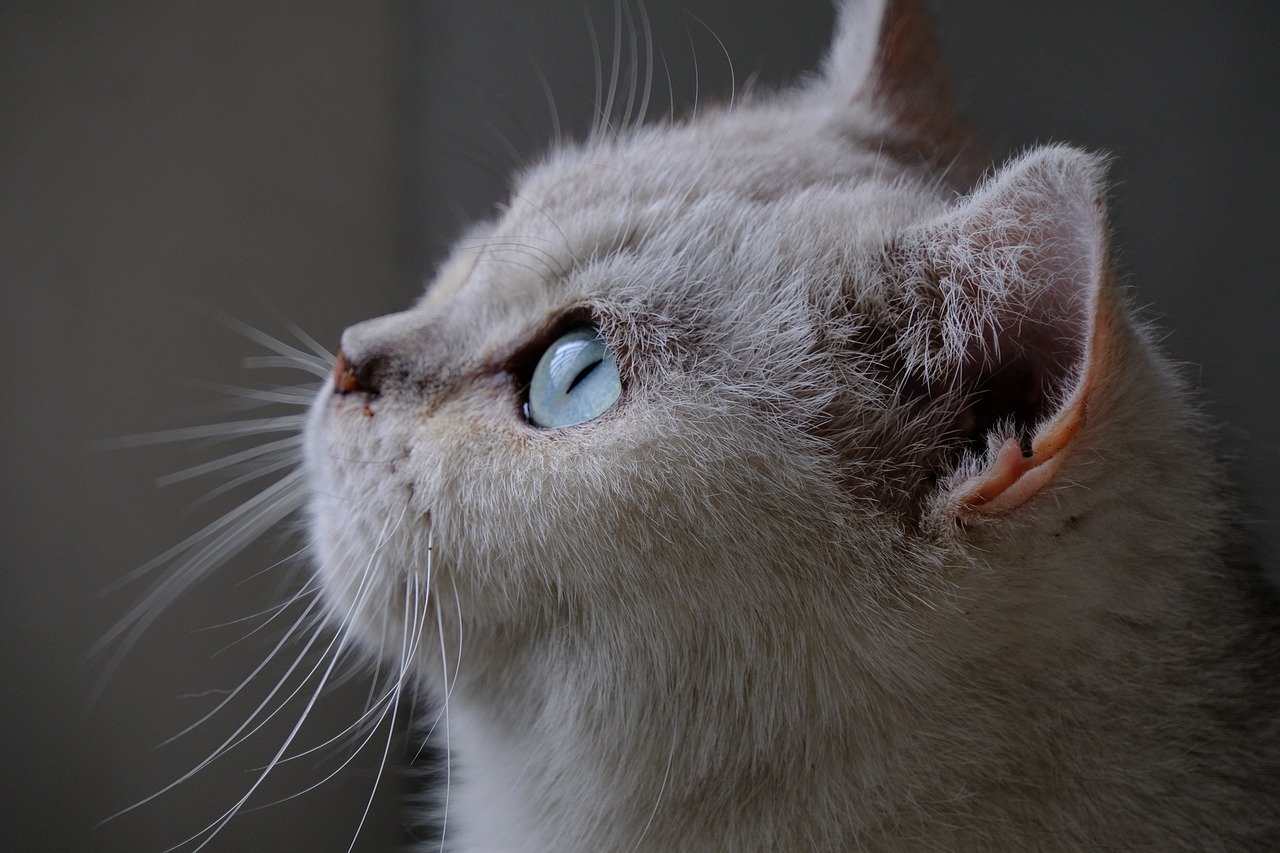
Effective Socialization Techniques
When it comes to helping your pet develop social skills, employing is key. Just like humans, pets thrive on interactions, and the right methods can make all the difference. One of the most effective strategies is to utilize controlled introductions. This means introducing your pet to new animals or people in a calm, controlled environment. Think of it like throwing a party: you wouldn’t want to invite a hundred people at once; instead, you’d want to gradually introduce guests to ensure everyone feels comfortable. Start with one or two new friends, and gradually increase the number as your pet becomes more at ease.
Another technique is positive reinforcement. This is where you reward your pet for displaying good social behavior. For instance, if your dog greets another dog without barking or growling, offer them a treat or some praise. This not only reinforces the good behavior but also helps your pet associate social interactions with positive outcomes. It’s like giving them a little gold star for being a good boy or girl!
Group classes and playdates can also be incredibly beneficial. These settings provide a structured environment where your pet can meet other animals and learn to interact appropriately. Imagine a classroom filled with eager students; each pet learns from the others, picking up on social cues and behaviors. Plus, it’s a great way for you to connect with other pet owners and share experiences. However, it’s essential to ensure that these classes are led by a knowledgeable trainer who understands animal behavior.
Gradual exposure to new environments is another powerful tool in your socialization toolkit. Think of this as taking your pet on a series of mini-adventures. Start by visiting quieter places where they can explore without feeling overwhelmed. Gradually increase the level of stimulation by introducing them to busier parks or pet-friendly cafes. This not only helps them adapt to new situations but also builds their confidence, making them feel like the world is a friendly place.
To help you visualize these techniques, here’s a quick reference table:
| Technique | Description | Benefits |
|---|---|---|
| Controlled Introductions | Introduce pets to new friends gradually in a calm environment. | Reduces anxiety and promotes comfort in social situations. |
| Positive Reinforcement | Reward good social behavior with treats or praise. | Encourages pets to repeat positive interactions. |
| Group Classes | Structured classes for pets to learn from each other. | Improves social skills and provides owner support. |
| Gradual Exposure | Expose pets to new environments step by step. | Builds confidence and adaptability. |
Ultimately, the goal of these techniques is to create a well-rounded pet who is comfortable in various social situations. Remember, patience is key! Just like us, pets need time to adjust to new experiences. Celebrate small victories along the way, and soon you’ll notice your pet blossoming into a confident social butterfly.
Group Classes and Playdates
When it comes to enhancing your pet's social skills, can be game-changers. Imagine your furry friend surrounded by a bunch of their peers, tails wagging, and paws dancing in excitement. These settings provide a golden opportunity for your pet to learn how to interact with others effectively. But why are these experiences so vital? Well, just like humans, pets thrive on social interaction. They learn boundaries, develop communication skills, and most importantly, they get to have fun!
Group classes, whether they focus on obedience, agility, or even specialized skills, are designed to expose pets to various stimuli and social situations. During these classes, your pet will encounter different dogs and handlers, which helps them learn how to behave appropriately in a group setting. For instance, they may learn to wait their turn, respect personal space, and respond to commands amidst distractions. This is crucial, as it builds their confidence and reduces anxiety when they encounter new situations in the future.
On the other hand, playdates offer a more relaxed environment where pets can engage in free play. This is where the magic happens! In a safe and controlled setting, your pet can engage in natural behaviors, such as chasing, wrestling, or simply sniffing around. It’s a fantastic way for them to practice their social skills without the pressure of structured training. Plus, you get to meet other pet owners and share tips and experiences, which can be incredibly valuable.
To maximize the benefits of group classes and playdates, consider the following tips:
- Choose the Right Environment: Make sure the space is safe and suitable for your pet. Look for classes or playdates that are supervised by professionals who understand animal behavior.
- Start Slow: If your pet is nervous or new to socialization, start with small groups or one-on-one playdates before moving on to larger classes.
- Observe and Interact: Pay attention to your pet's body language. If they seem overwhelmed, it’s okay to take a break. You can also engage with your pet during these interactions to help them feel more secure.
In conclusion, group classes and playdates are not just fun; they are essential for your pet's social development. By providing them with these opportunities, you're setting them up for a lifetime of positive interactions, both with other pets and humans. So, why not take the plunge and enroll your pet in a class or arrange a playdate? You might be surprised at how much they grow and flourish in these enriching environments!
Q: How often should I take my pet to group classes or playdates?
A: It depends on your pet's needs and comfort level. Start with once a week and adjust based on their progress and enthusiasm.
Q: What if my pet is shy or aggressive around other animals?
A: It's important to consult with a professional trainer who can provide tailored advice and help you introduce your pet to social situations gradually.
Q: Can I attend the classes with my pet?
A: Yes! Many classes encourage owner participation, which can help your pet feel more comfortable and secure.
Gradual Exposure to New Environments
Introducing your pet to new environments can be both an exciting and daunting experience. Just like humans, pets can feel overwhelmed when faced with unfamiliar situations. The key to a successful transition lies in gradual exposure. This approach allows your furry friend to adapt at their own pace, reducing anxiety and building confidence. Think of it as taking baby steps; you wouldn’t jump into a deep end of a pool without first testing the waters, right?
Start by identifying new environments that are relatively low-stress for your pet. This could be a quiet park, a friend’s backyard, or even a pet-friendly café during off-peak hours. The idea is to introduce your pet to these settings in a controlled manner. For instance, you might begin with short visits, gradually increasing the duration as your pet becomes more comfortable. This technique not only helps them adjust but also makes the experience enjoyable.
During these outings, pay close attention to your pet's body language. Signs of stress can include tail tucking, excessive panting, or attempts to hide. If you notice these behaviors, it may be time to retreat to a familiar space and try again later. Remember, patience is crucial. Just as a flower needs time to bloom, your pet requires time to flourish in new environments.
Here are some tips to facilitate gradual exposure:
- Start Small: Begin with short visits to new places and gradually increase the time spent there.
- Positive Reinforcement: Use treats and praise to reward your pet for calm behavior during these outings.
- Familiar Items: Bring along their favorite toy or blanket to provide comfort in new surroundings.
- Socialize with Others: If possible, introduce your pet to other calm animals or friendly humans during these visits to create positive associations.
As your pet becomes more accustomed to different environments, you can introduce them to busier or more stimulating locations. This gradual approach minimizes the risk of overwhelming them and helps prevent potential behavioral issues. Just like a child learning to ride a bike, your pet will gain confidence with each successful outing.
In summary, gradual exposure to new environments is a vital component of socialization for your pet. By taking the time to introduce them to the world around them slowly, you are setting the stage for a well-adjusted and happy companion. Keep in mind that every pet is unique; what works for one may not work for another. So, stay observant and adjust your strategies as needed.
Q: How long should I wait before exposing my pet to a new environment?
A: It depends on your pet's comfort level. Start with short visits and gradually increase the duration as they become more at ease.
Q: What if my pet shows signs of stress during exposure?
A: If you notice signs of stress, such as hiding or excessive barking, it's best to remove them from the situation and try again later in a more controlled manner.
Q: Can I use treats to help with socialization?
A: Absolutely! Positive reinforcement through treats can help create a positive association with new environments and experiences.
Q: How can I tell if my pet is ready for a busier environment?
A: Look for signs of confidence, such as exploring without hesitation, relaxed body language, and engagement with other pets or people.
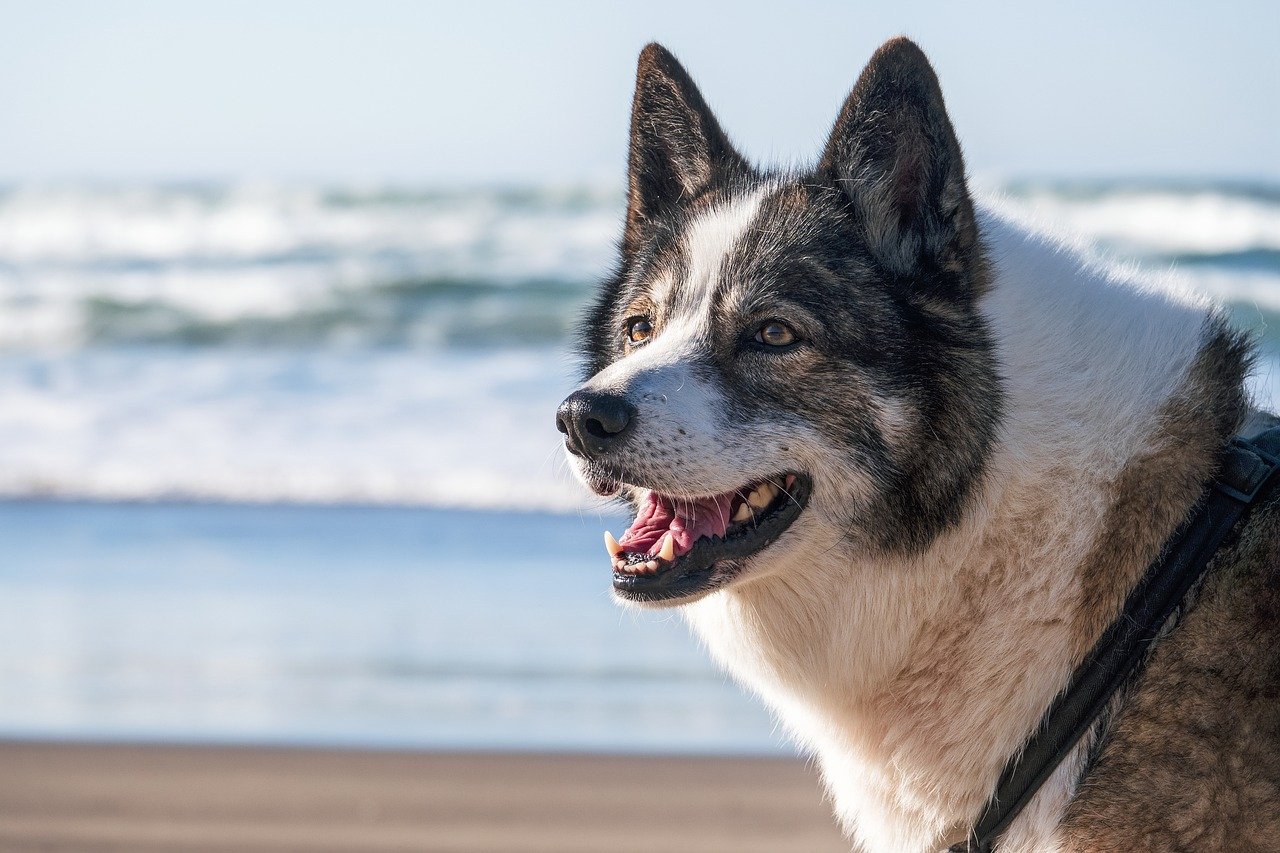
Monitoring Progress and Adjusting Strategies
Monitoring your pet's socialization progress is not just a routine task; it's a vital part of ensuring their happiness and well-being. Just like humans, pets can have fluctuating moods and behaviors, and keeping an eye on these changes can help you identify what works and what doesn’t. Think of it as being a detective in your pet’s life—gathering clues about their social interactions and emotional responses. Are they more relaxed around other dogs? Do they seem less anxious during vet visits? These observations are key!
To effectively monitor your pet's progress, consider keeping a socialization journal. This can be as simple as a notebook where you jot down notes after each interaction or outing. Record the date, the type of interaction, and your pet's behavior during and after the experience. This way, you can look back and spot patterns over time. For example, if you notice that your pet becomes anxious in crowded places but thrives during one-on-one playdates, you can adjust your strategies accordingly.
Moreover, it's essential to be flexible with your strategies. If something isn’t working, don’t hesitate to try a different approach. Here are some strategies to consider:
- Positive Reinforcement: Reward your pet with treats or praise when they exhibit good social behavior. This encourages them to repeat those actions.
- Gradual Exposure: If your pet shows signs of fear, gradually introduce them to new environments or situations. Start small and increase exposure as they become more comfortable.
- Professional Guidance: Sometimes, seeking help from a professional trainer or behaviorist can provide new insights and techniques tailored to your pet's needs.
It's crucial to recognize that every pet is unique, and what works for one may not work for another. Be patient and give your furry friend the time they need to adjust. Frequent check-ins on their behavior will help you stay informed and allow you to make necessary adjustments to your socialization plan.
Lastly, remember that socialization is an ongoing process. Just like humans, pets can continue to learn and adapt throughout their lives. Whether it’s introducing them to new friends or exposing them to different environments, each experience contributes to their social development. So, keep the momentum going, and celebrate the small victories along the way!
Q: How often should I monitor my pet's socialization progress?
A: It's best to monitor your pet's progress regularly, ideally after each new social interaction or outing. This way, you can quickly identify any changes in behavior.
Q: What should I do if my pet shows signs of aggression during socialization?
A: If your pet displays aggression, it's important to take a step back. Consult with a professional trainer or behaviorist to develop a tailored plan that addresses the specific issues.
Q: Can socialization help with my pet's anxiety?
A: Yes! Proper socialization can significantly reduce anxiety in pets by helping them become more comfortable in various situations and around other animals and people.
Frequently Asked Questions
- What is pet socialization, and why is it important?
Pet socialization is the process of exposing your pet to various experiences, people, and other animals in a positive way. It's crucial because it helps pets develop confidence, reduces anxiety, and encourages good behavior. Just like humans, pets thrive in social settings, and early socialization can lead to a happier and healthier life.
- How can I tell if my pet is well-socialized?
Signs of a well-socialized pet include being comfortable around other animals and people, displaying relaxed body language, and engaging in play without aggression. If your pet happily interacts with others and shows curiosity rather than fear, they are likely on the right track!
- What are some common socialization challenges pets face?
Many pets may experience challenges such as fearfulness, aggression, or anxiety in new situations. These issues can stem from a lack of exposure to different environments or negative past experiences. Identifying these challenges early on is key to addressing them effectively.
- What techniques can I use to improve my pet's social skills?
Effective techniques include controlled introductions to new pets or people, using positive reinforcement like treats or praise, and gradually exposing your pet to different environments. Group classes and playdates can also provide valuable social experiences and help your pet learn appropriate behaviors.
- How can I monitor my pet's socialization progress?
Monitoring your pet's progress involves observing their behavior in various social settings and noting any changes. Keep a journal to track their comfort levels, reactions to new experiences, and improvements over time. Adjust your socialization strategies based on what you observe to ensure continuous development.


